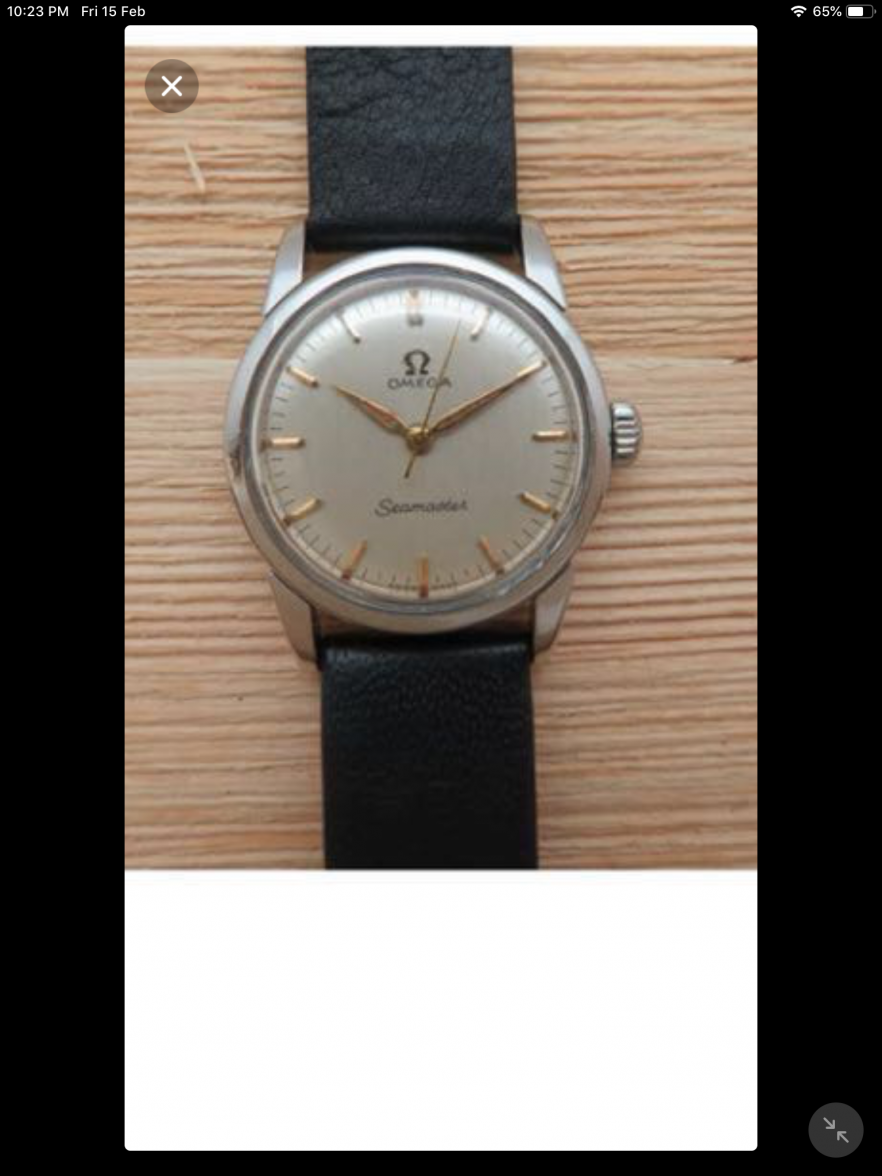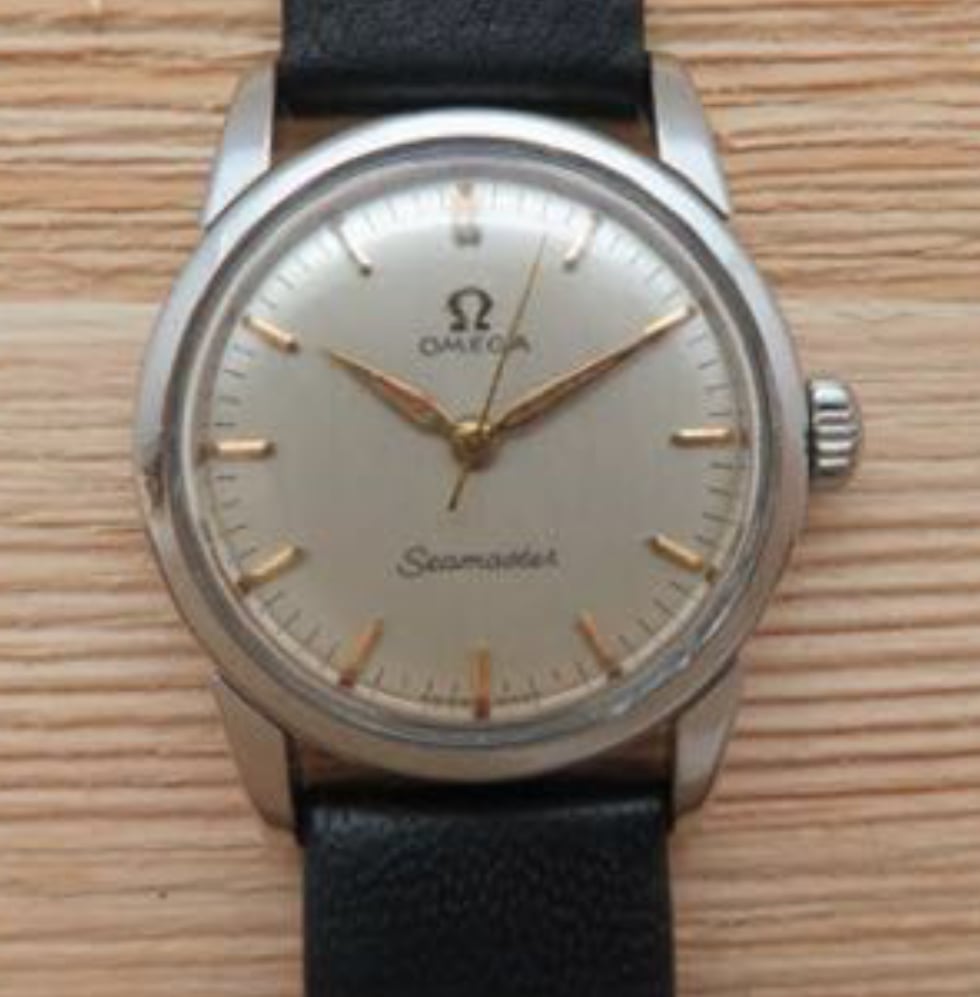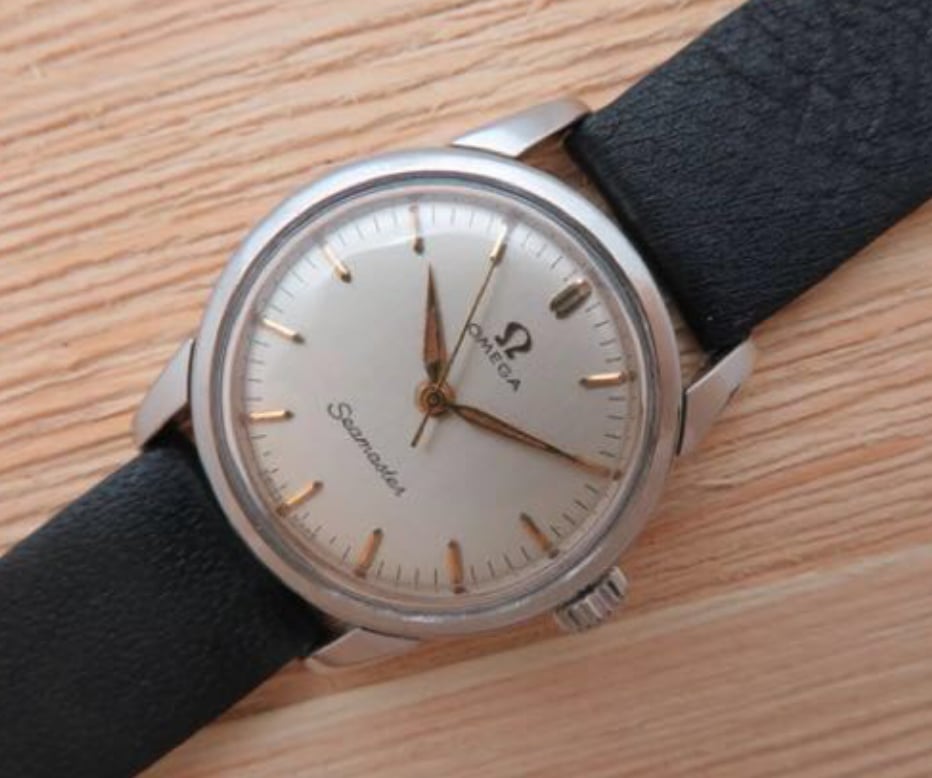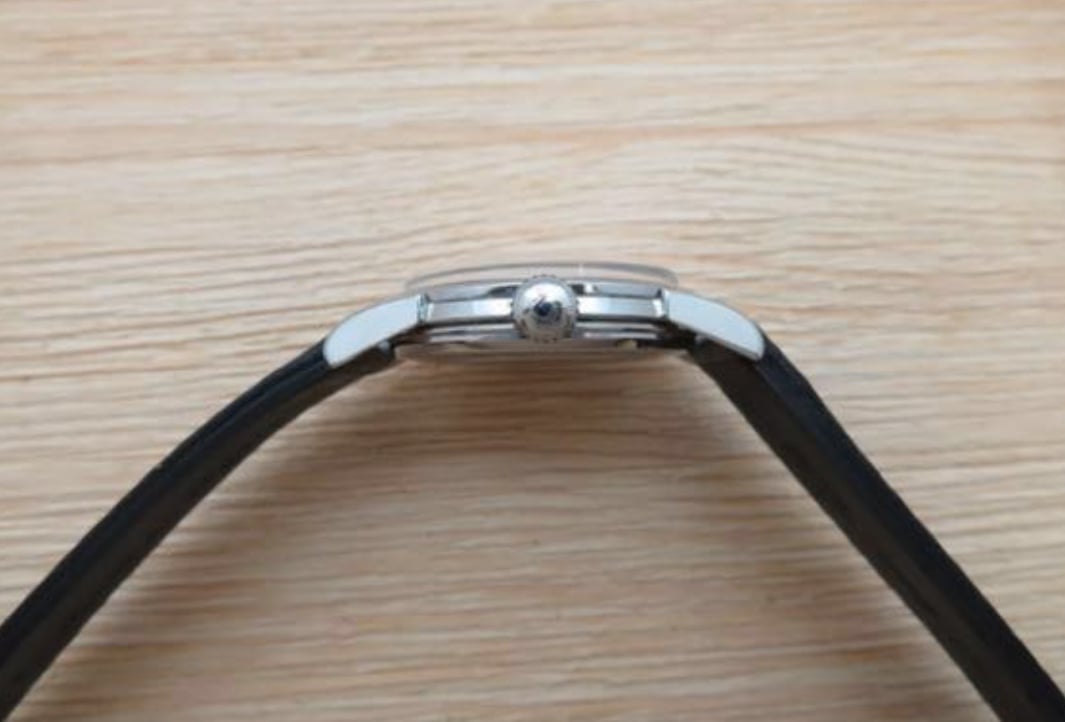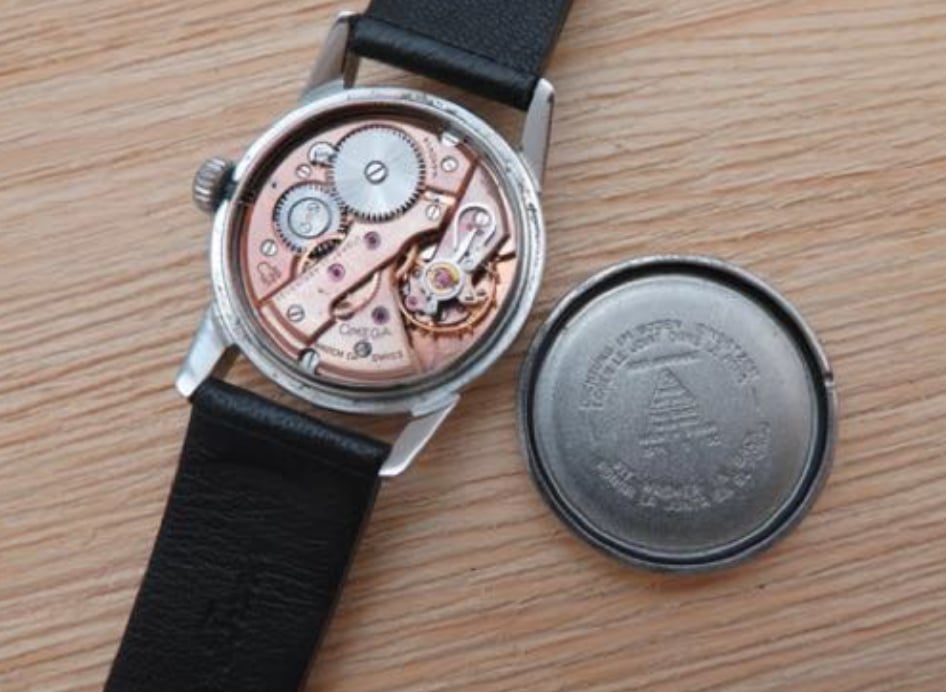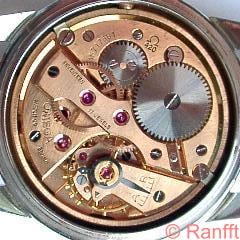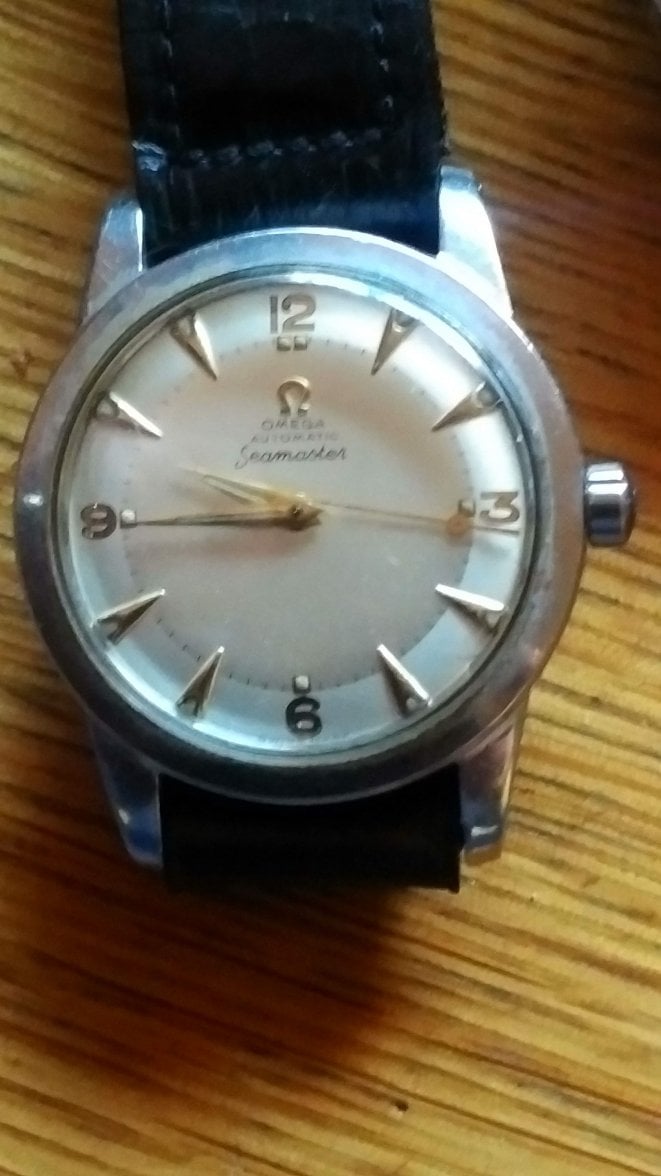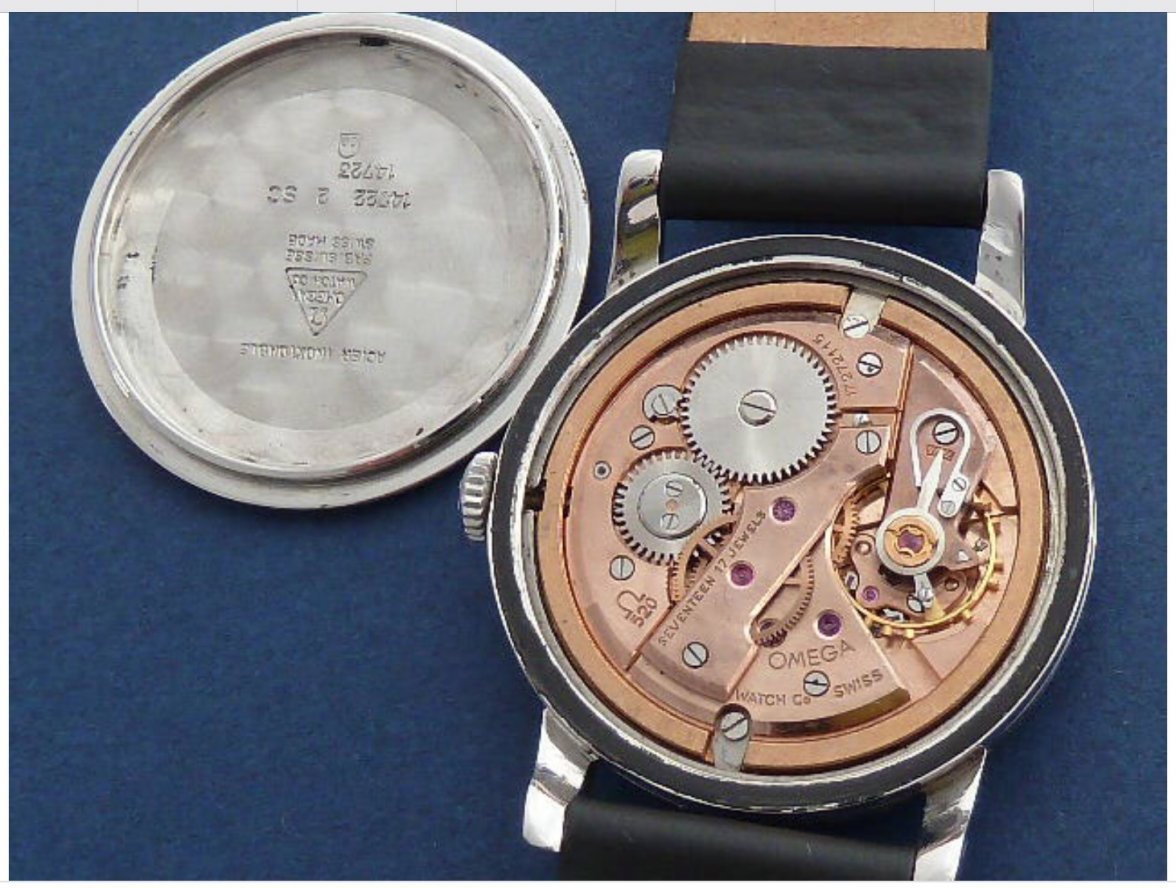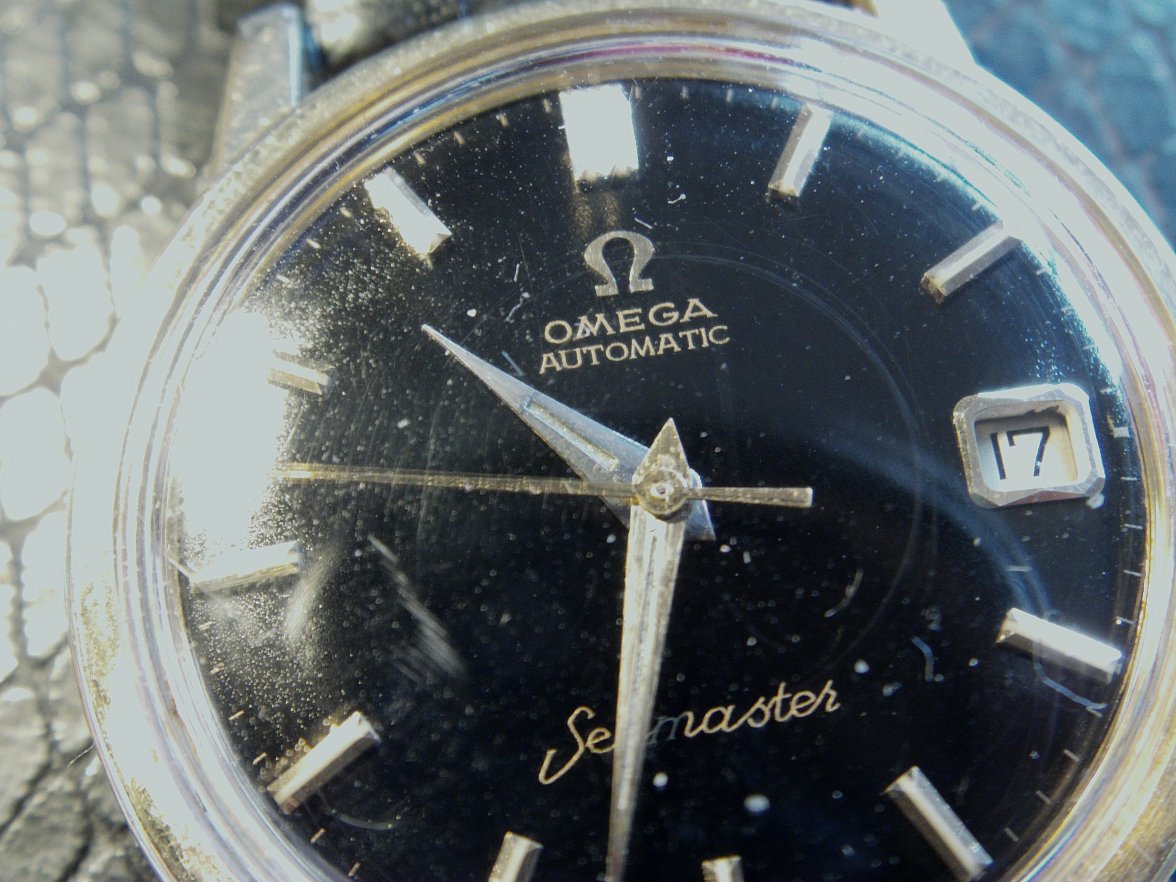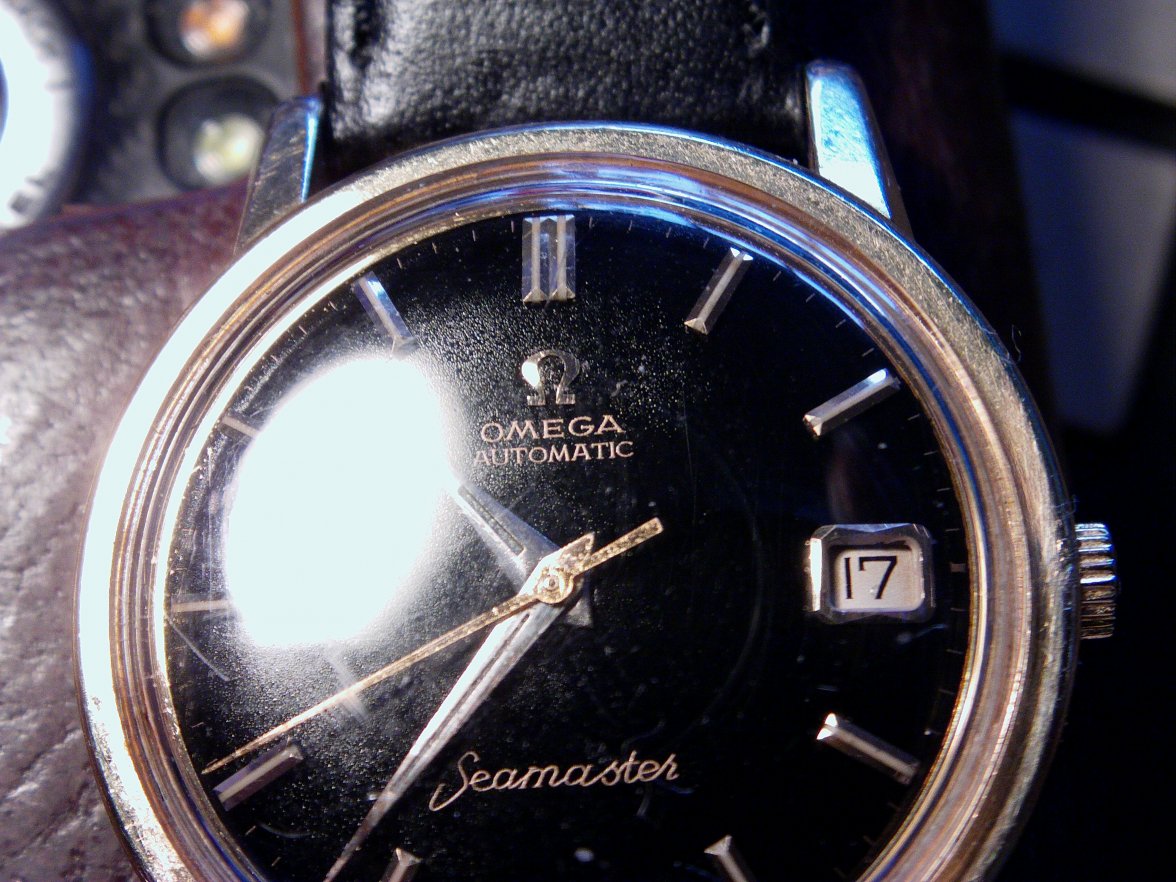There's a large number of variations of dials. That said, the fonts remain the same. I've just looked back at the photo I posted and how out of focus it is! In your example, the E (and G most likely) are incorrect. Now, I actually took your example to be earlier than it is and would have said it had the wrong "seamaster" but you later say it's "60s".
Anyway, to answer your question as best I can:
first, look at the font. You have to learn the fonts as there are variations over the years. That also means you have to know the year that the watch comes from;
next, look at the alignment. The text should always be centred and straight. Draw (imaginary) lines from the two and ten markers to the centre of the dial and the text at the top should be equidistant to those lines. Same applies to any text at the bottom of the dial, taking lines from 4 and 8;
third, factory prints are even. Markers on the minute track will be the same length and thickness (often with the exception of thicker markers at 12, 3, 6 and 9). Apply common sense when you consider wear and age to the dial. Always be suspicious of dials that look like new;
fourth, learn how different dials age. Understand how heat or damp affects dials (and lume). Look for "age spots" in the laquer. Look carefully for absence of laquer as this is often missing in redials.
There is no short cut to learning these things. Read. Everything. Books, online references. Go find Chuck Maddox' blog. It's a little outdated (the great man passed a number of years ago), but he was (one of, if not the) first to really analyse watches. He had a passion and it is infectious. We're lucky that his essays are still maintained by others.
Get your hands on as many watches as you can. You have to get experience. When you've handled enough "right" watches, you can spot bad fakes from across the room and you can tell "wrong" watches when you pick them up. There is no short cut to experience. And never forget that you only know a fraction of what there is to know. I hold my hands up to making a mistake just last week. I don't make too many mistakes but I know that won't be my last.
In fact, just to round things off, here's my mistake ... see if you can spot why it's "wrong":
